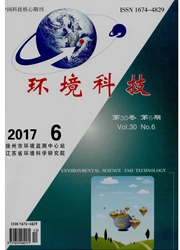

 中文摘要:
中文摘要:
针对安徽省山地、丘陵地区农村生活污水水质波动大、N和P含量较高、运行管理难度较大等特点,通过试验寻求一种抗冲击负荷能力强、N和P去除效率高、自动化程度高、节能环保并适应安徽省皖西大别山、皖南丘陵山区气候环境的污水处理工艺。通过采用跌水充氧接触氧化+人工湿地组合工艺处理安徽省山区某处农村生活污水,在确定工艺参数的基础上,对不同负荷下该工艺的处理效果进行试验研究,并对污染物去除效率进行分析。研究表明,该工艺抗冲击负荷能力强,出水中各主要污染物指标能稳定达到GB 18918—2002《城镇污水处理厂污染物排放标准》一级A排放标准要求,对COD,BOD5,SS,NH3-N,TN和TP的平均去除率分别达到87.0%,94.8%,94.0%,87.7%,92.0%和87.6%。同时,该工艺运行费用较低、自动化程度高、N和P去除效果稳定的特点,适应我国目前山地、丘陵地区农村生活污水处理现状。
 英文摘要:
英文摘要:
According to the characteristics of rural domestic sewage of Anhui mountainous and hilly areas such as variation of water quality, high content of nitrogen and phosphorus, the difficulty of operation management, the treatment system was designed for treating rural domestic sewage by waterfall aeration contact oxidation combined with constructed wetland technology. To investigate the feasibility of the process of rural sewage treatment, the process parameters was determined and pollutant removal efficiency was analyzed. The average removal rate of COD,BOD5,SS,NH3-N,TN and TP were 87.0%,94.8%,94.0%,87.7%,92.0% and87.6% respectively, which meet "Urban sewage treatment plant pollutant discharge standards" GB18918—2002. Meanwhile, the cost of this process is low, and this process has a high degree of automation, high nitrogen and phosphorus removal efficiency, which was applicable to our current rural sewage treatment.
 同期刊论文项目
同期刊论文项目
 同项目期刊论文
同项目期刊论文
 期刊信息
期刊信息
